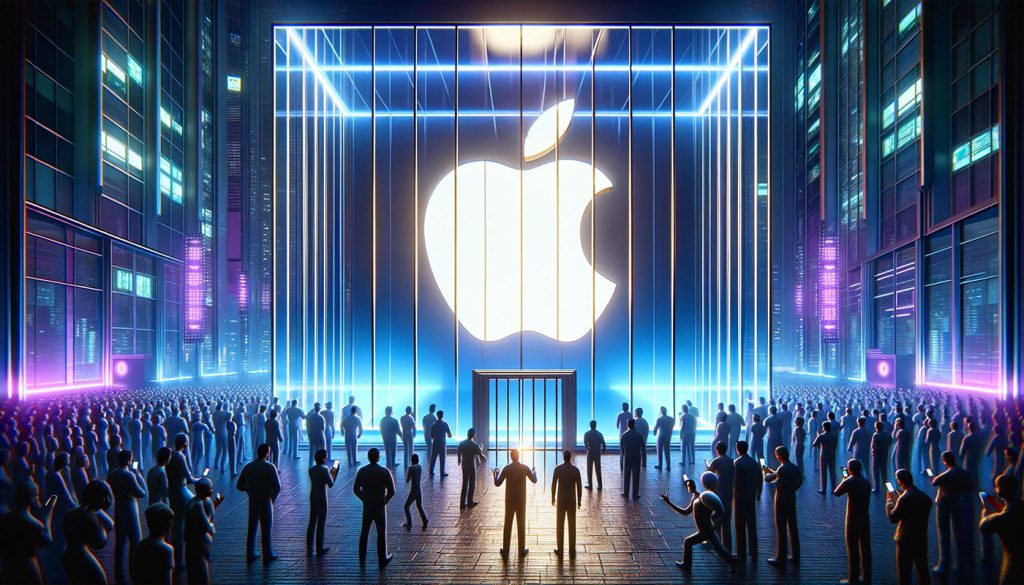The walled garden. The fortress of control. The golden handcuffs. Whatever you want to call it, closed ecosystems like Apple’s are both a marvel of design and an affront to everything the open web stands for.
To some, they represent seamless integration, security, and reliability. To others, they are a restrictive force that limits competition, stifles creativity, and locks users into a carefully controlled environment where only one company calls the shots.
So, are closed ecosystems a necessary evil? Or are we just complaining because we can’t sideload apps as easily as we’d like? Let’s get into it.
The Cult of Apple and the Illusion of Choice
Apple has perfected the art of seduction. The iPhone isn’t just a phone; it’s a lifestyle. The MacBook isn’t just a laptop; it’s a status symbol. The iPad isn’t just a tablet; it’s a… well, it’s an oversized iPhone with fewer capabilities than a MacBook, but don’t tell Apple fans that.
What makes Apple so powerful isn’t just its hardware—it’s the closed-loop system it has built around it. You don’t just buy an iPhone; you buy into an ecosystem that dictates how you store your files (iCloud), how you message (iMessage), and how you spend money (Apple Pay).
And don’t even think about using an Android device alongside your Mac—it’s like mixing oil and water.
Apple’s control is absolute, and the worst part? Users like it.
This is what makes Apple’s walled garden so effective. The walls aren’t just there to keep others out—they’re there to keep you in. The longer you stay, the harder it is to leave.
That blue iMessage bubble isn’t just a design choice; it’s a psychological tool that makes people reluctant to switch to Android. Apple doesn’t just sell products; it sells dependency.
Security or Monopoly? The Double-Edged Sword of a Closed System
One of the biggest arguments for closed ecosystems is security. Apple prides itself on its tightly controlled environment, ensuring that apps meet strict privacy and security guidelines before they ever reach your device.
On the surface, this is great—less malware, fewer scams, and a more predictable user experience.
But here’s the problem: who decides what’s “safe” and what isn’t?
Apple has repeatedly used its App Store policies to block apps that compete with its own services, stifle alternative payment methods, and maintain an iron grip on its revenue stream. Spotify, Epic Games, and countless other developers have called this out, accusing Apple of using security concerns as an excuse for anti-competitive behavior.
Remember when Apple conveniently didn’t allow cloud gaming services like Xbox Cloud Gaming and Google Stadia to operate freely on iOS? Their excuse? “Security concerns.” The reality? Apple didn’t want services that could bypass the App Store’s lucrative 30% cut.
At what point does security become an excuse for control? If Apple truly cared about user choice and security, wouldn’t it allow users to install software from outside the App Store—just like you can on a Mac?
Oh wait, that’s changing in the EU because of legal pressure. Apple is allowing sideloading now—not because it wants to, but because it has no choice.
The Death of Innovation? Or Just a Different Kind?
A common argument against closed ecosystems is that they stifle innovation. But let’s be real—Apple’s ecosystem does encourage innovation. It’s just a different type of innovation.
Instead of a chaotic, open environment where developers can do whatever they want, Apple forces innovation within its rules. This has led to polished, high-quality apps and an ecosystem that—love it or hate it—works seamlessly.
That said, there’s a dark side. Many potential breakthroughs never happen because they can’t happen in Apple’s world. If Steve Jobs had gotten his way, third-party apps wouldn’t have even been allowed on the iPhone. (Yes, really. When the iPhone launched, the only way to build for it was through Safari-based web apps. That went well.)
Apple’s “we know best” philosophy might lead to a refined experience, but it also kills ideas that don’t fit into its vision. When developers have to fight to get a simple feature approved—like a new email app that doesn’t use Apple’s payment system—it’s hard to argue that innovation is thriving.
Can We Escape? (Spoiler: Probably Not)
Let’s be honest—Apple isn’t the only company building walled gardens. Google, Microsoft, and even Tesla are all guilty of locking users into their ecosystems. The difference is that Apple is exceptionally good at it.
So, is there an escape? Theoretically, yes. You can buy a Windows laptop instead of a Mac, an Android phone instead of an iPhone, and use open-source software wherever possible.
But if you’ve ever tried switching from an iPhone to an Android device, you know the pain. Lost messages, missing contacts, broken integrations—it’s like Apple designed the process to be as excruciating as possible. Because, well, it did.
At this point, fighting Apple’s walled garden is like trying to escape The Matrix. You can do it, but you’re up against an entire system designed to keep you inside.
So, Are Closed Ecosystems a Necessary Evil?
If you value control, independence, and flexibility, then yes—closed ecosystems are a frustrating obstacle. They limit choice, restrict competition, and ensure that the companies in charge dictate how you use technology.
If you value convenience, security, and a cohesive experience, then no—closed ecosystems are a well-designed solution. They make technology work seamlessly, eliminate the guesswork, and create a world where things just work.
At the end of the day, the problem isn’t that Apple’s ecosystem exists—it’s that we don’t have a meaningful alternative. Until competition forces Apple to loosen its grip, we’re all just prisoners in a beautiful, well-designed cage.
And the worst part?
We decorated the cage ourselves.






